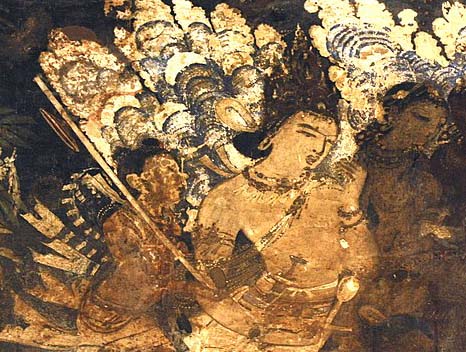Current Research
Indica
No, the Sanskrit language did not originate in India, and then move outward. It was brought by conquerors from elsewhere, who also brought with them their sacrifices.
No, the Rg Veda is not the oldest Indian poetry; those hymns are mostly lost. What we have in the Rg Veda is in part a later mixture, including popular charms and spells.
No, the Upanishads are not just another Veda. They are a revolt against priestly tradition, where layfolk challenge the priests on their own territory, and win.
Yes, the Buddhist element in the Upanishads is integral. To the previous art of direct access to deity by meditation, it adds the thought, Who wants to be immortal anyway? Who wants to be forever reborn into this vale of suffering? Better to leave the whole thing behind, and escape into extinction.
To this last phase, the Analects of Confucius is a contemporary witness. Chinese traders had been making the year-long trip over the mountains and down the rivers, to India and back. They traveled light, their mule loaded with high-value-per-ounce stock like cosmetics and drugs. They brought back the Buddhist art of meditation, practiced by Confucius' disciple Yen Hwei. The Confucians of the 05th century were aware of the history of the Buddha, as recorded in the Maha-Parinibbana Sutta, and were influenced by the second stratum of that text; they even invented a similar story of Confucius' own last days.
All this is of something more than quaint interest. Unlike the early Indian texts, the many classical Chinese texts, due in part to their intimate interrelations with each other, can be closely dated, and this offers to bring order to the otherwise vague idea which India now has of its own chronology. Or it would, if there were anybody out there prepared to accept the offer. As of this writing, such is not the case, but there is always tomorrow.
We do not contemplate a book on this subject (unless you count the Arthashastra, and even that may go better as a long article). Our preliminary findings will be available as a regular feature in the Indica section of our journal Alpha. Those on the other side of the mountains, or at the other end of the old trade routes, are very welcome to contribute their better insights to that slender stock.
Here is the tentative contents page for Alpha 3 (2022).
and here, just in case, are our current Guidelines for ContributorsFinally, here are a few topics which seem to us to offer attractive possibilities for future study:
- How far can we trust the implications of the Avestan hymns?
- What was Soma, anyway?
- The contrast between the Aryan invasions in India and China
- Who were the Apsaras (shown flanking Indra in the picture above)?
- Did the early Indians really lack writing? Or did they, like modern Japanese court musicians, merely disdain its use?
- The evolution from poets to schools of poetry in the "family" books of the Rg Veda (compare Asaph)
- The Three Transmission Traditions of the Brhad-Aranyaka Upanishad
- Why are women so prominent in the Upanishads, compared to their scant mention in the other Vedas?
- Does not Buddhist monasticism follow, step by step, the progress of Ganga urbanization?
- Does not the existence of the Pattimokkha refute the backdating of Upali?
- Dzvngdz's remodelling the image of Confucius along Buddhist lines, in Analects 7
- What factors are evident in the evolution of law as mirrored in the Arthashastra?
- Ongoing questions about the Asoka Inscriptions
- Why Sri Lanka?
All materials on this site are Copyright © 1993 or subsequently by the Warring States Project or by individual authors
Contact the Project
